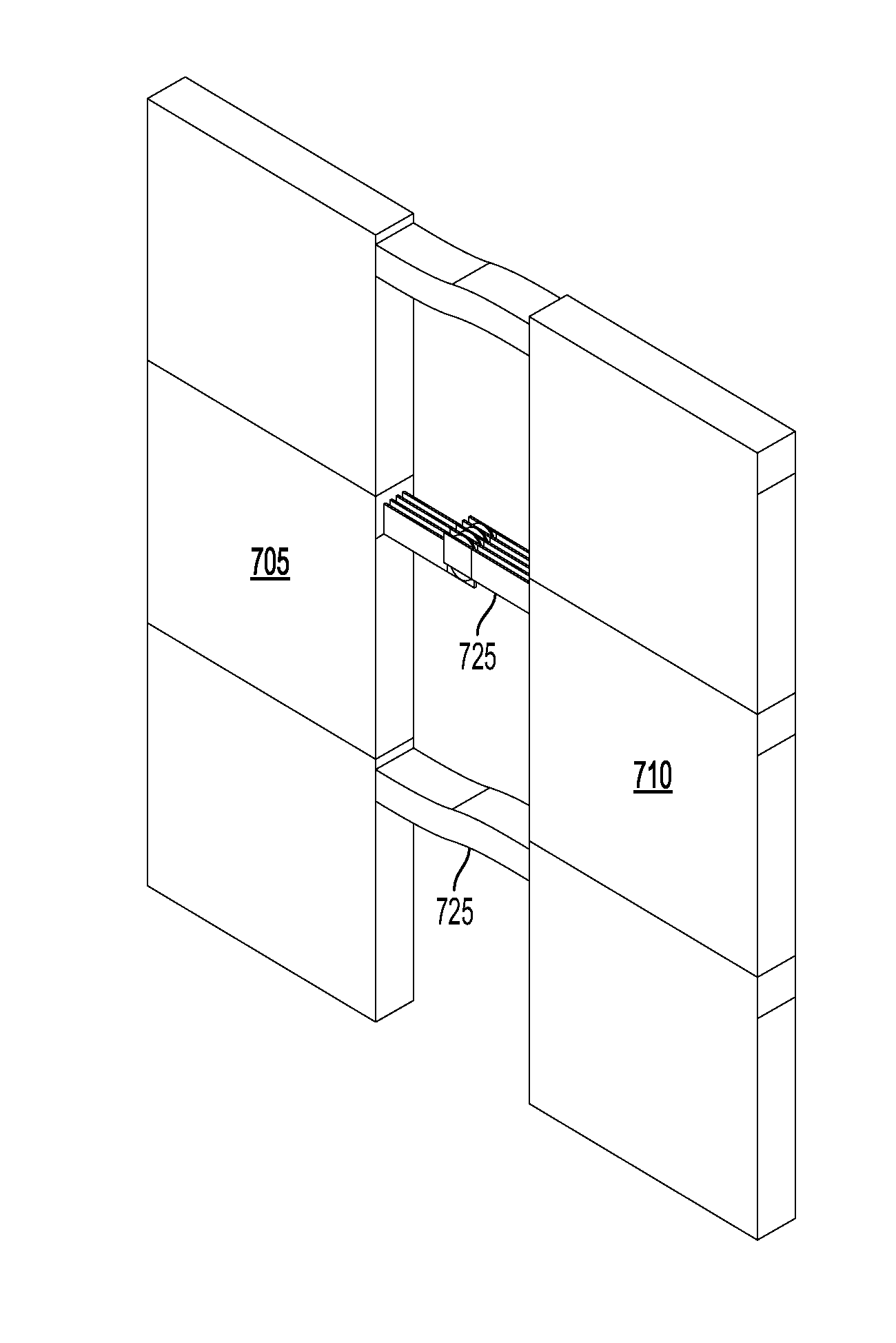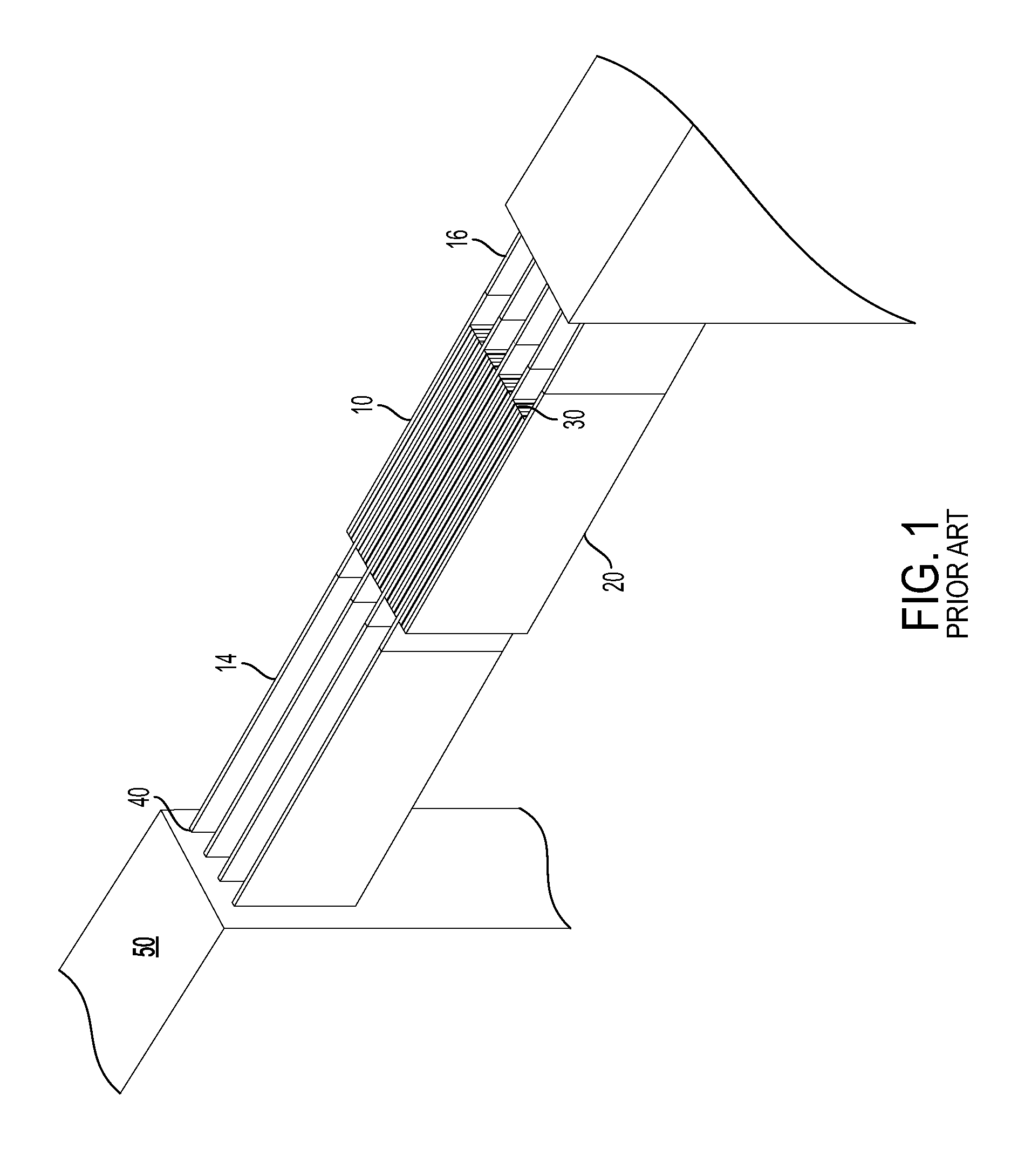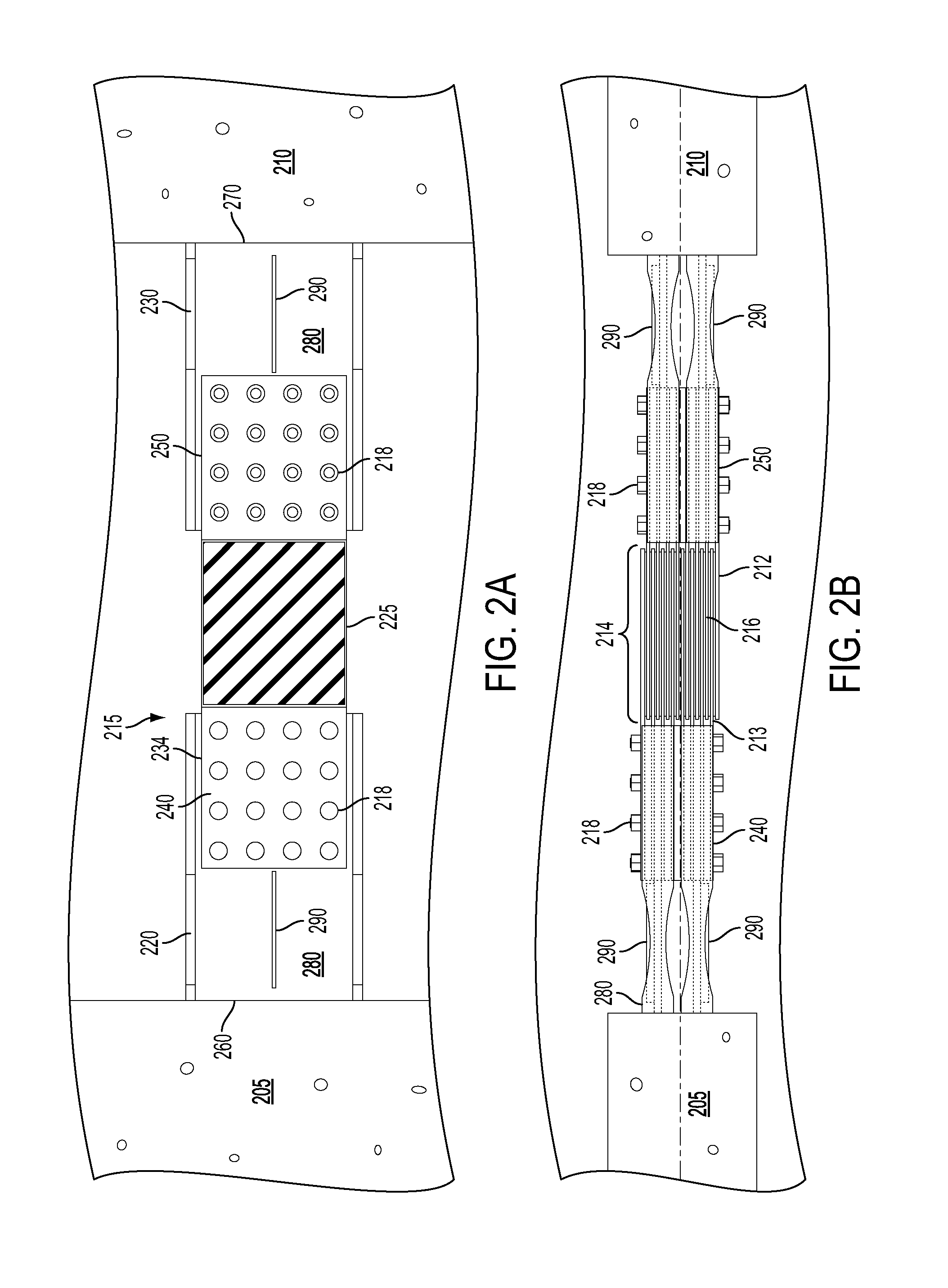Coupling member for damping vibrations in building structures
a technology for damping vibrations and coupling members, applied in the direction of vibration dampers, building components, shock proofing, etc., can solve the problems of shear loads in the damping system, failure modes are also considered, failure of the elements to which the damping system is connected or the vertical structural elements to which the damping element is connected, etc., to prevent the plate from sliding
- Summary
- Abstract
- Description
- Claims
- Application Information
AI Technical Summary
Benefits of technology
Problems solved by technology
Method used
Image
Examples
example
[0082]In the Example that follows, coupling members incorporating the preferred damping elements as herein described are tested as described below, with and without the fuse portion according to the invention. Further details are provided below. In the examples, reference is made to FCDs or fork configuration dampers, which refer to dampers of the type described in the preferred embodiments that incorporate two sets of a plurality of plates interdigitated with other and a damping material disposed between each pair of interdigitated plates.
[0083]Tests were conducted on two Fork Configuration Dampers (FCDs) in the laboratory at Ecole Polytechnique in Montreal. There were two different specimens tested; the first (FCD-A) was designed for inclusion in an 85-storey building and did not include a fuse portion according to the invention. The second (FCD-B) was designed for inclusion in a 50-storey building and did include a fuse portion according to the invention, such as that shown in FI...
PUM
 Login to View More
Login to View More Abstract
Description
Claims
Application Information
 Login to View More
Login to View More - R&D
- Intellectual Property
- Life Sciences
- Materials
- Tech Scout
- Unparalleled Data Quality
- Higher Quality Content
- 60% Fewer Hallucinations
Browse by: Latest US Patents, China's latest patents, Technical Efficacy Thesaurus, Application Domain, Technology Topic, Popular Technical Reports.
© 2025 PatSnap. All rights reserved.Legal|Privacy policy|Modern Slavery Act Transparency Statement|Sitemap|About US| Contact US: help@patsnap.com



